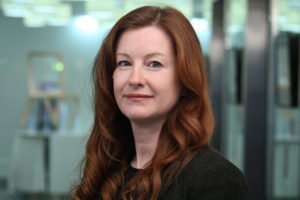The Young Foundation's new report - Community not Catastrophe – A welcome focus on action and understanding community and charity roles in emergencies
By Robyn Knox, director of the Voluntary and Community Sector Emergencies Partnership
“Every time a major incident occurs, we say we ‘must make changes’ so ‘this never happens again’. But many of the events we are experiencing will happen again, and again, and again. We need to be better prepared… Community, not catastrophe.”
So starts The Young Foundation’s new report, Community not Catastrophe, out today (April 2), aiming to move the post-emergency conversation on from genuine, well-intended promises to what we all really want and need - practical action and change.
The report (which we are supporting and members of our team were interviewed for), calls for more central recognition of the voluntary and community sector in the vital work of resilience-building that goes on every day in our communities.
As well as helpfully moving the reader on from seeing the voluntary and community sector as a two-dimensional homogenous group, the report talks through the powerful range of skills and capabilities the sector offers in resilience and, quite rightly, calls for civil society’s role not just to be seen as a nice to have, but as a piece of ‘critical national infrastructure’ that attracts respect, involvement and Government investment.
There’s lots of other gold in this report and I encourage you to read it. Here, to whet your appetite, we share a personal note from the report’s author, Helen Goulden, OBE, chief executive of The Young Foundation. It’s a useful piece of scene-setting for where we’ve been, where we’re at and why the current moment, despite feeling so challenging, also feels like an opportunity window for us to move together beyond words to action.
Community not Catastrophe – a personal note from Young Foundation chief executive and report author Helen Goulden (reproduced with permission of the Young Foundation).
Image showing the front cover of The Young Foundation Report, Community, not catastrophe, subtitle: What a ‘whole society’ approach to preparedness really means.
Growing up on a council estate in the 1970’s and early 1980’s, a number of things are seared into my memory. The presence and activities of the National Front. Nights in a dark house during power cuts. But most memorable was impending nuclear war.
Surrounded by five RAF bases, the whole area was deemed to be a prime location for the Russians to drop a bomb. It might seem very far-fetched, but this fear was reinforced at every turn. The F4 Phantoms and Harrier Jump Jets screaming over our school playground; the regular dropping of leaflets through the door warning us what to do if the four-minute warning sounded; the backdrop of films such as When the Wind Blows and The Day After. The latter terrifying to an adult, let alone a child. But it was the leaflets that scared me the most, because they came to offer comfort but delivered the opposite. It did not seem plausible even to my tiny ten-year-old mind that unscrewing the living room door from its hinges, leaning it against a wall and hiding underneath it would provide any defence against an atomic bomb.
As I got older, that childhood fear and preoccupation with existential threat never went away. And many years later I became a city prepper, always ensuring I had a backpack stashed in the back of my wardrobe, ready to hike out of London with clothes, a roll of cash, emergency supplies and a shortwave radio. My closest friends humoured me and assumed I had some sort of problem; with one memorably accusing me of being ‘wistfully apocalyptic’ – actually wanting the worst to happen.
It was not until 2006, when I graduated through a radical, but now sadly disbanded MSc at Bath University that I came to some sort of reckoning with my fear. Any kind of long-term answer to preparedness or survival through deep crisis was never going to be a singular endeavour. I couldn’t just walk alone from a city on fire. It would be morally and practically impossible to do so. I saw little worth in a climate-changed, war-changed society that did not seek its response and recovery in communion with others. Ultimately, in any least-worst-case scenario, I knew we would only get through crisis through mutual aid, community and solidarity.
Fast forward to 2025, and the commentary on the fracturing and polarisation in our society now consumes many books, many column inches, many lived realities. This short report seeks to fill the ‘community chasm’ that exists in how we understand strategies for ‘preparedness’ in the face of multiple and varied threats. We can prepare as individuals (if we are able, and as best we can) and we have exceptional commitment to preparedness through statutory services responders; albeit with less investment than is needed. But unless we see ourselves, civil society, as genuinely part of our civil contingency infrastructure, our response to major threats will fail many of us; and specifically fail those who are already at the sharpest end of disadvantage and marginalisation.
The role of the public, communities, civil society and the voluntary sector is downgraded in many national policy debates about crisis preparedness. That needs to change.
Helen Goulden, March 2025 Community, not catastrophe – what a whole society approach to preparedness really means
Head and shoulders photograph of Helen Goulden, CEO of The Young Foundation.


